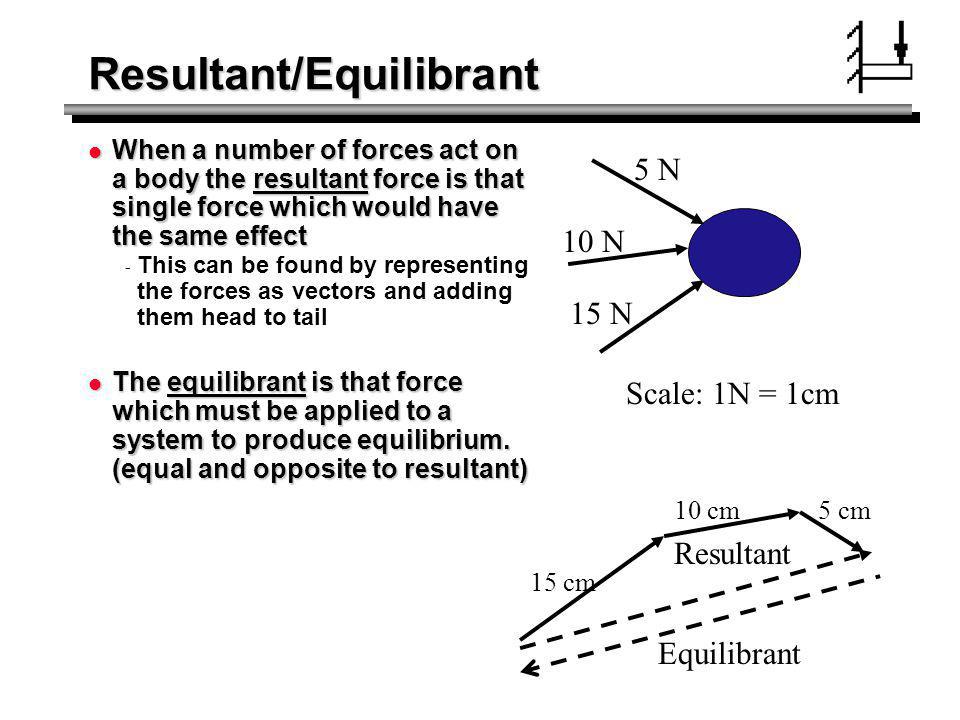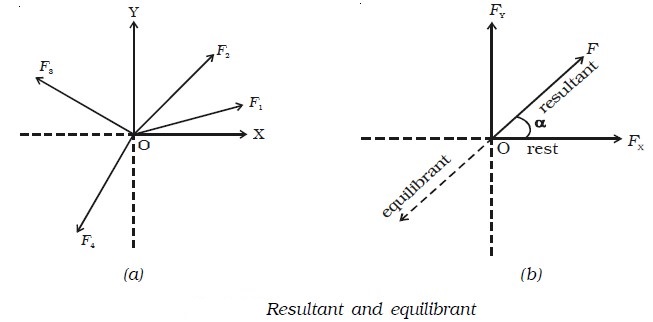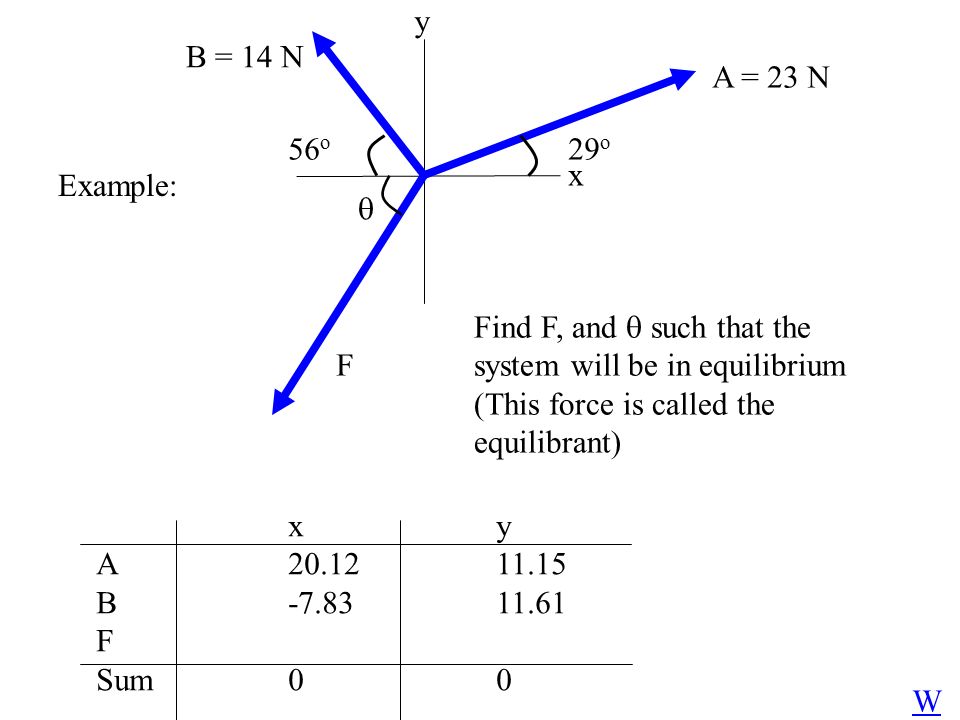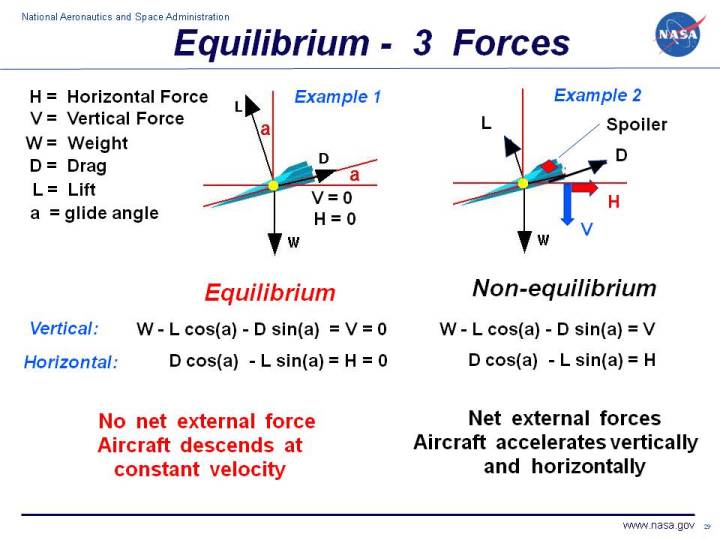Define Resultant And Equilibrant Of Forces
MCV 4U 81 Vectors as Forces Done1notebook 1 May 03 2018 Learning Goal. I will be able to use vectors to model and solve realworld problems involving velocity and force.
0 degrees at north 90 east 180 south 270 west.

Define resultant and equilibrant of forces. It is usually computed by the component method given two or more known forces. Resultant and Equilibrant - forces that make up the resultant are called the components of the resultant NOTES - Methods to find the resultant of coplanar and concurrent forces as under. A video tutorial from our E.
Define the terms resultant and equilibriant of two forces acting at a point. Define the terms resultant and equilibriant of two forces acting at a point. 2 Marks Q-2 Write the analytical conditions of equilibrium for coplanar concurrent force system.
Resultant net force causes the displacement of a body ie. Find the magnitude and direction of a the resultant b the equilibriant of two forces 10 N acting in the direction N 30 East and 15 N acting in the easterly direction if both forces act at a point. If the size and direction of the forces acting on an object are exactly balanced then there is no net force acting on the.
1 on a question. Concurrent forces are forces that pass through the same point. The resultant force is found by the parallelogram law of vectors and the equilibriant.
Q-1 Define the relation between resultant and equilibrant. Equilibrant forces are those that act on a body at rest and counteract the force pushing or pulling the body in the opposite direction. HttpsengineersacademyLearn the basics of how to calculate the resultant of two forces acting on an object using trigonometry.
The resultant force is kind of like the total of all vectors and the equilibrant is 180 degrees around and is the force that would balance the resultant a perfect example is a force table. Resultant is a single force that can replace the effect of a number of forces. 2 Marks Q-4 State the lamis theorem.
Answers 1 Resultant force is that single force which acting alone will have the same effect in magnitude and direction as two or more forces acting together while equilibriant force is the single force that will balance all the other forces taken together. Equilibrant is a force that is exactly opposite to a resultant. Explain thedifference between the two termsFind the magnitude and direction of a theresultant b the equilibriant of two forces 10N acting in the direction N 30 East and 15 Nacting in the easterly direction if both forcesact at a point.
Force in real life 2. Define the terms resultant and equilibriant of two forces acting at a point. Equilibrant keeps the body at rest ie.
A tutorial from our Engin. 2 Marks Q-3 Define the free body and free body diagram. Differentiate the Resultant and Equilibrant of two forces.
A force is a vector quantity which means that it has both a magnitude size and a direction associated with it. Equilibrant forces act on virtually every object in the world that is not moving. Equilibrant forces establish equilibrium for an object and make the object motionless.
Explain the difference between the two terms. Explain thedifference between the two termsFind the magnitude and direction of a theresultant b the equilibriant of two forces 10N acting in the direction N 30 East and 15 Nacting in the easterly direction if both forcesact at a point. A very basic concept when dealing with forces is the idea of equilibrium or balanceIn general an object can be acted on by several forces at the same time.
Practice on page 362. The maximum value of resultant of two forces P and Q. Equilibrant and resultant have equal magnitudes but opposite directions.
An equilibrant of number of forces acting on a body is a single force which cancels the effect of resultant of a system of forces or which brings the system and the body is equilibrium. HttpsengineersacademyLearn how to determine the resultant and equilibrant of two forces acting on an object using trigonometry. Define the tenn resultant and equilibrant.
Resultant and Equilibrant Action. A resultant force would cause a stationary object to start moving or an object with a given velocity to speed up or slow down or change directions such that velocity of the object changes. Force 1 50 newtons 35deg force 2 200 newtons 120 deg.

Mechanics Sean Dalton Course Format Lectures Tutorials Laboratory Work Ppt Video Online Download

How Find Equilibrant Mathematics Stack Exchange
What Is The Relation Between A Resultant Force And An Equilibrant Force How Will You Calculate The Magnitude Of A Resultant Of Two Force 60n And 40n Acting At A Point Such

Concurrent Forces And Coplanar Forces Engineersfield

Statics Equilibrant The Condition Of Equilibrium How To Solve Example Whiteboards Demo Force Scales Masses Ppt Download
What Are Resultant And Equilibrant Forces Quora
What Do You Mean By The Resultant Of Two Forces Quora

Equilibrium Of Forces Classhall Com

9 Resultant And Equilibrium Analysis Problem 1 Complete Concept Youtube

Find Equilibrant Force Vector In Equilibrium System Youtube

Equilibrant Of Three Forces In Three Dimension Vectors Resultant And Equilibrium Youtube

Forces In Equilibrium Ppt Video Online Download

What Are Resultant And Equilibrant Forces Quora



Post a Comment for "Define Resultant And Equilibrant Of Forces"